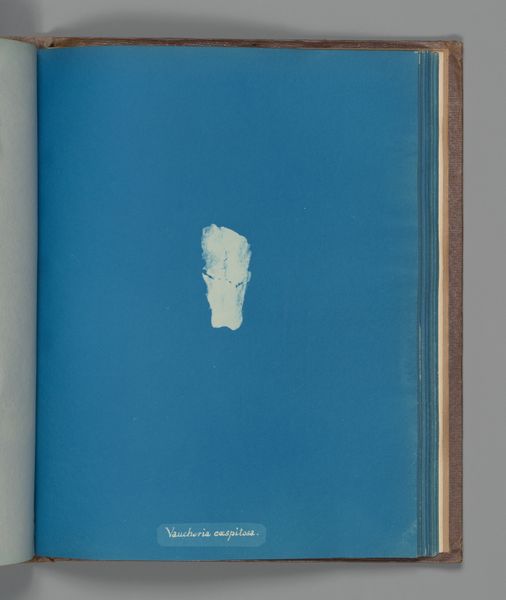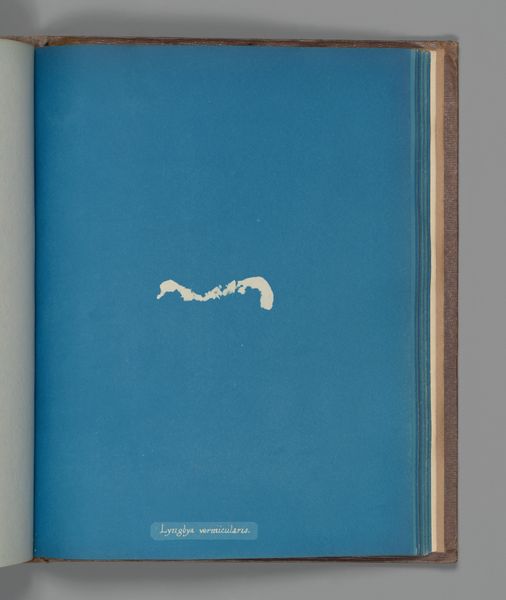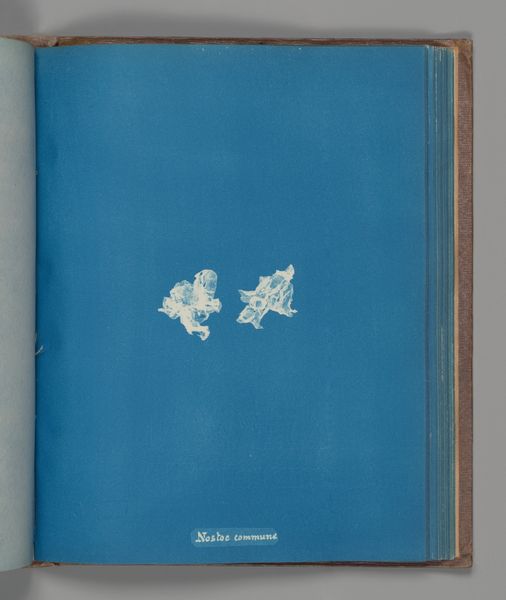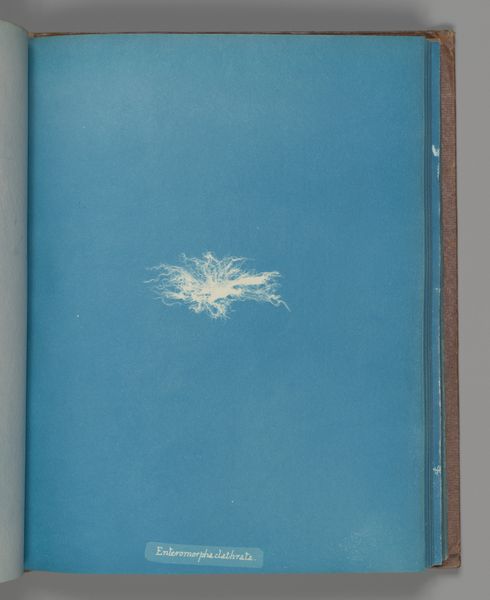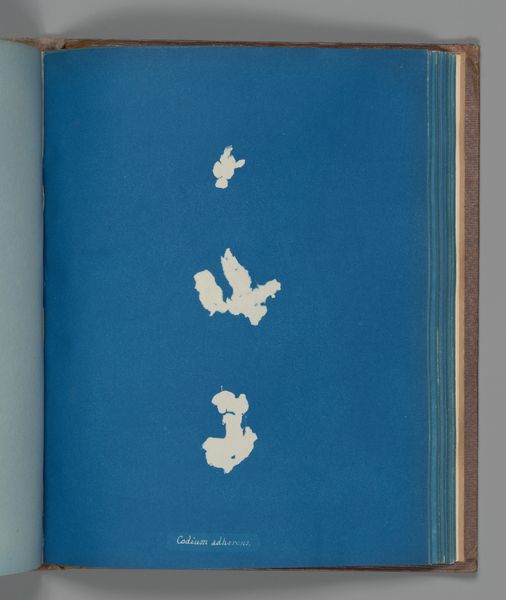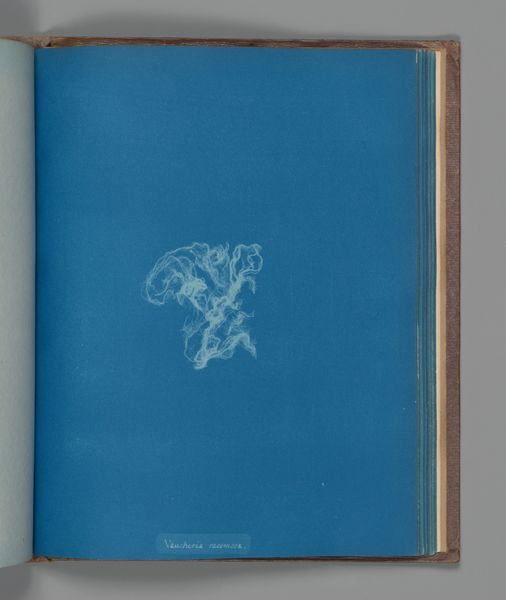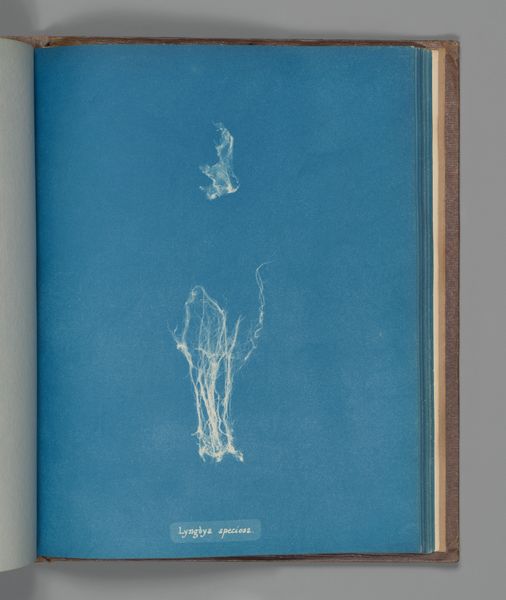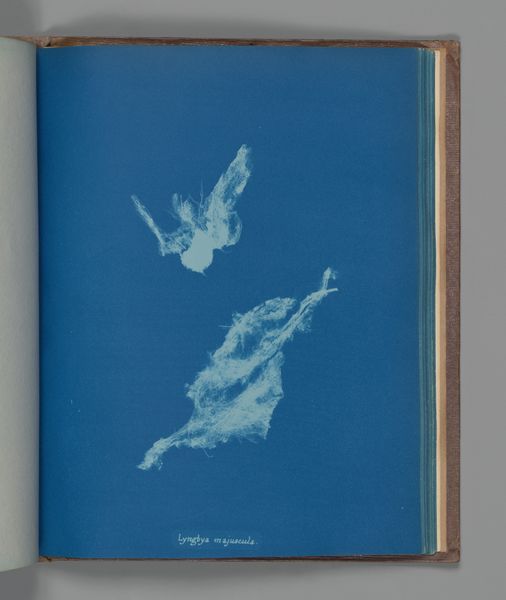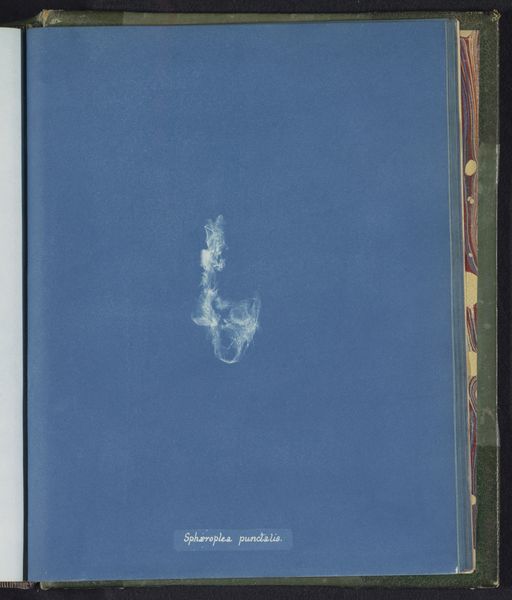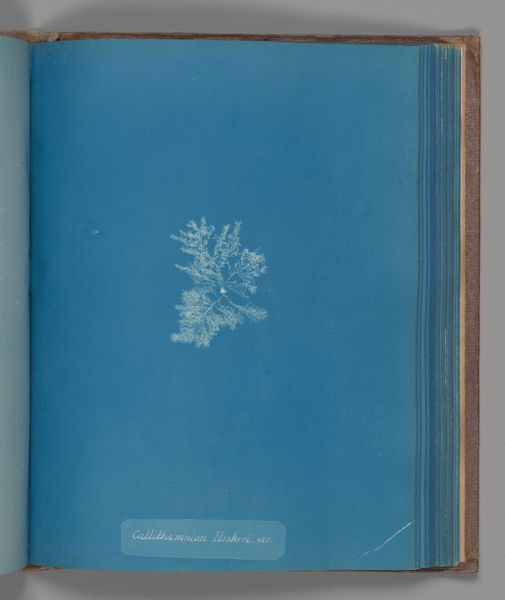
print, cyanotype, photography
# print
#
cyanotype
#
photography
Dimensions: Image: 25.3 x 20 cm (9 15/16 x 7 7/8 in.)
Copyright: Public Domain
Editor: Here we have Anna Atkins' "Calothrix distorta" from around 1851 to 1855, a cyanotype print. It's such a striking blue, almost dreamlike. What do you see in this piece, considering its scientific and artistic context? Curator: The cyanotype itself becomes a powerful symbol. The deep Prussian blue evokes scientific exploration – think of blueprints, knowledge emerging from a dark ground. This almost mystical light feels like knowledge itself coming into focus. Editor: So, the colour itself has symbolic weight. How about the seaweed, Calothrix distorta? Curator: The seaweed, in its delicate, almost ethereal form, mirrors the fragility of our understanding of the natural world. Algae have long been a symbol of adaptation and persistence – in some creation stories, algae and lichen are among the first life forms to come into existence. It's about resilience and transformation. Does the image perhaps put you in mind of other floating objects? Perhaps feathers? A descending soul? Editor: That's interesting! I was focused on the science, but seeing it as something more evocative opens up new interpretations. Curator: Exactly. The beauty of these images lies in their ability to transcend mere scientific documentation. Atkins is immortalizing a natural form, but also hinting at a grander scheme through colour and careful composition. The interplay of science and art allows the algae's image to exist outside a strict scientific framework. What will you remember about this artwork in the coming days? Editor: I think I’ll remember the symbolic weight of the colour and how it transforms a scientific study into something more evocative, almost spiritual. Curator: A rewarding experience, indeed.
Comments
No comments
Be the first to comment and join the conversation on the ultimate creative platform.
